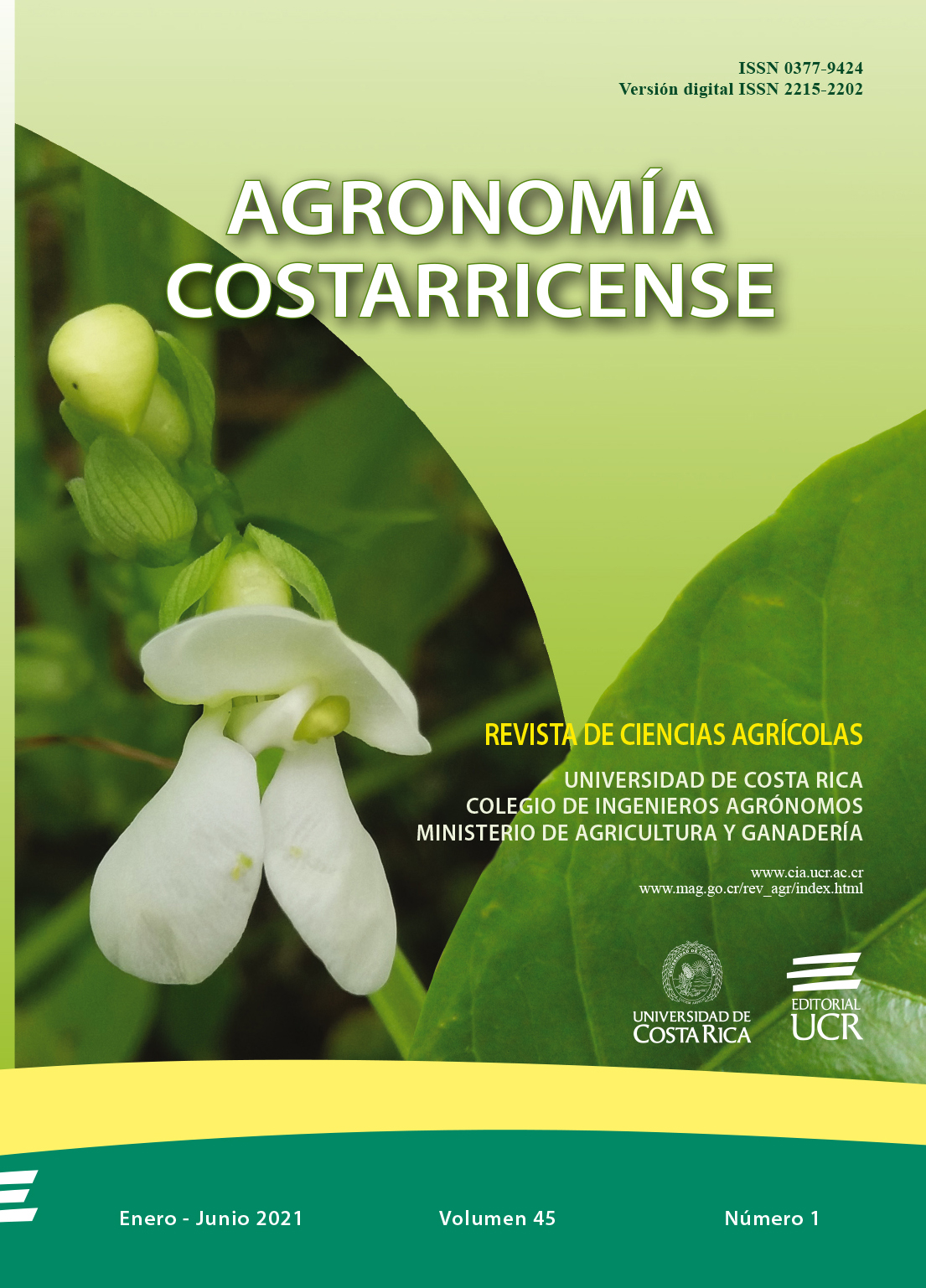Abstract
Introduction. Mountain microorganisms (MM) are a fundamental input for organic/ecological farming in Costa Rica. Its use raises questions related to the procedure for liquid culture activation in order to attain the largest microbial populations. Objetive. To evaluate key factors that affect the quality of MM liquid phase culture, such as activation time, aeration, presence of nutrients, among others. Materials and methods. Factors associated with liquid-phase culture, incubation time, aeration availability, solid MM dosage, molasses dosage, and addition of soluble (K) and insoluble (P) inorganic nutrients were evaluated. Bacteria, filamentous fungi, nitrogen- fixing bacteria (FN), phosphorus-solubilizing microorganisms (SP), lactobacilli (Lac), and yeast (Lev) populations were determined, as well as pH and phosphorus in solution. Data was subjected to the Shapiro-Wilks test. Variables that did not fit a normality test were evaluated according to the Kruskall-Wallis assessment method, and when they did fit normality were analyzed by ANOVA and Fisher’s LSD test (p<0.05). Results and discussion. Populations of functional microorganisms changed over time. pH increased during incubation, while Lac and Lev decreased. Increased air availability reduced fermentation time and increased microbial populations; however, this regime accelerated pH increase rate, along with faster decline of Lac and Lev, and increase of FN and SF. Higher molasses concentration negatively affected Lac populations, while halving the initial amount of solid MM resulted in increased SP populations and did not affect other microbial groups. Amending liquid culture with an organic source of K induced an increase in overall populations, therefore activated MM can also be used as a source of nutrients. Rock phosphate addition had no effect on microbial populations, but data suggests that solubilized phosphorus was fixed in microbial biomass. Conclusion. Production conditions affect the dynamics of microbial populations present in the liquid-phase activation of MM.


